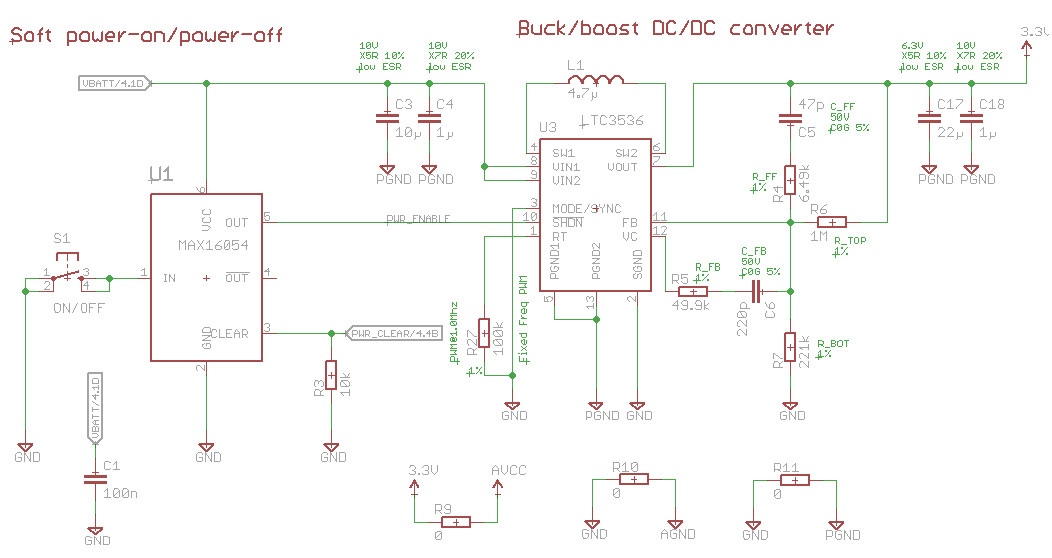I need some help with the layout of a power supply. I botched the first two iterations as I do not have the necessary experience, and I would like to avoid another costly run.
For the sake of completeness, here is the previous (related) question: Noise problem with buck/boost switching regulator
My device is powered by a Lithium-Ion battery, but needs an operating voltage of 3.3V. Thus, Vin = 2.7-4.2V, Vout = 3.3V. I decided to use a LTC3536 buck/boost switching regulator: http://cds.linear.com/docs/en/datasheet/3536fa.pdf
I basically used the reference implementation (page 1 of the datasheet) for a 1A/3.3V power supply. Here are the schematics:
There are three separate ground planes: PGND, coming from the battery and connecting to the LTC3536; GND, the signal ground which branches off from pin 3, and AGND, used for analog sensors etc which branches of from the GND plane.
This is the latest version of the 2-layer board. Red is top, blue is bottom layer. It's quite close to LT's demo board. I annotated the different ground planes, as well as VBATT and VCC.
Design considerations
I tried to adhere the recommendations that I found in the datasheet and the answers I got on the previous question. I use 3 different ground planes as described above, connected in a single point using a 0 Ohm resistor. I tried to use a star-like approach for routing VCC. AVCC is connected to VCC using a 0 Ohm resistor.
Questions
- One of the problems with the previous design was that I connected the exposed pad of U3 using vias at the side of the chip. This required a lot of space. I now realized that LT added on their demo board the vias directly under the exposed pad. I didn't know that this is possible - do I need to do something special to these vias?
- I am quite unsure regarding the placement of the ground planes. At the moment, the GND plane tees off from pin 2/3, and is connected to the AGND and PGND plane using a 0 Ohm resistor. Placement of this resistor is kind of random atm.
- The whole circuit is switched using a MAX16054 soft power-on/off IC, which connects to SHDN of U3 (pin 10). The MAX16054 is connected to VBATT and GND (not PGND). Might this cause problems?
Any comments would be greatly appreciated!


